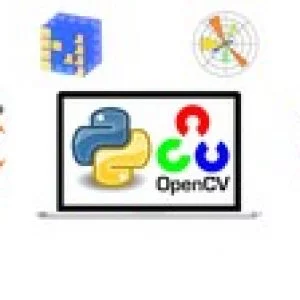
Deep Neural Networks with PyTorch
FREE
The course will teach you how to develop deep learning models using Pytorch. The course will start with Pytorch’s tensors and Automatic differentiation package. Then each section will cover different models starting off with fundamentals such as Linear Regression, and logistic/softmax regression. Followed by Feedforward deep neural networks, the role of different activation functions, normalization and dropout layers. Then Convolutional Neural Networks and Transfer learning will be covered. Finally, several other Deep learning methods will be covered. Learning Outcomes: After completing this course, learners will be able to: – explain and apply their knowledge of Deep Neural Networks and related machine learning methods – know how to use Python libraries such as PyTorch for Deep Learning applications – build Deep Neural Networks using PyTorch IBM offers a wide range of technology and consulting services; a broad portfolio of middleware for collaboration, predictive analytics, software development and systems management; and the world’s most advanced servers and supercomputers. Utilizing its business consulting, technology and R&D expertise, IBM helps clients become “smarter” as the planet becomes more digitally interconnected. IBM invests more than $6 billion a year in R&D, just completing its 21st year of patent leadership. IBM Research has received recognition beyond any commercial …
Instructor Details
Courses : 3
Specification: Deep Neural Networks with PyTorch
|
37 reviews for Deep Neural Networks with PyTorch
Add a review Cancel reply
This site uses Akismet to reduce spam. Learn how your comment data is processed.

| Price | Free |
|---|---|
| Provider | |
| Duration | 20 hours |
| Year | 2019 |
| Level | Intermediate |
| Language | English |
| Certificate | Yes |
| Quizzes | Yes |

FREE






Shinhoo K –
Awesome! This course gives me the basic workflow for using machine learning technique in my research! The materials in the form of Jupyter lab really help!
Pavan D –
very intuitive and in depth
Daniel K –
Amazing, really informative and helps a lot !!! really liked this course and would recommend this to anyone interested in Deep learning!
Vittorino M –
Aprendi muchisimo. Gracias.
Farrukh N A –
Best course on AI
RuoxinLi –
Very Clear explanation and rich labs. The quiz can be more challenging
Henrik S –
While the subject of this course is interesting, the general quality of the course materials is sub standard of what I am used to on Coursera. I posted a question on the forum that the staff never bothered to answer. I used to a much better quality from Coursera.
Jordan W –
A terrific overview of PyTorch. I was especially amazed by the lab notebooks where the author went above and beyond to plot everything in a useful way. This allowed the student to visualize everything that was going on under the hood. In each notebook, there was also multiple ways of showing how to accomplish a task whether it be coding manually or using a PyTorch function to simplify. I appreciate seeing it both ways as it really demystifies the black box of Deep Learning libraries.
Youness E M –
There is a number of errors in the courses and in quiz
ThanhTung –
very helpful
Prosenjit D –
Horrible slides, instructor’s monotonous voice, typos in exercises, and explanations are inadequate. Course is a rip off at 50 dollar a month.
Krishna S B –
It would have been better if graded programming assignments were there.
Pietro D –
The course is interesting and well organized but the quiz are not challenging and full of typos.
Michael X –
Still a decent course but compared to other courses in this series, both the content and the presentation of the content really lack clarity.
sada n –
it is too deep
Theodore G –
Very intensive course. Could do more training labs. But this is definitely a very dense course. Extremely helpful to get started on ML/Deep Learning.
Eric –
Good, thorough course. Does not hold the student to any kind of standard or accountability and quizzes are ridiculously easy to pass.
Stefan W –
Great course with in depth material & hands on learning.
Benhur O J –
To focus in the coding but not the underlying structure of the library and how to use it.
Konrad A B –
Excellent Course. The Instructor put a lot of work into the content. Thank you for sharing the knowledge
Yong S –
Very well done course! The concepts are pretty clearly explained. Sometimes the labs have instructions that are a bit misleading but it’s a very minor issue. I really enjoyed the instructor using colored blocks as a tool to explain codes!
Marvin L –
It was Good !!
Paranjape A J –
More graded coding assignments would have been better, but content is good!
Miele W –
Well, as there are no sort of exams or real questions to answer in order to pass, it strictly depends on how much attention you put in following this course. IMHO if well studied, it gives you a solid foundation, in order to let you explore the pytorch module.
Pham C B –
A good course for people who want to start with pytorch framework. This course start from sample problem to an complex ones help people understand easily.
Lemikhov A –
No programming assingments
Arct J Z –
It is freeaaakin hard if you take the whole IBM AI ENGINEERING Professional Cert in the duration of a trial period.
Victor B –
I found the course instruction is confusing, sequential and class module should be in different video parts
Alexis b –
Well prepared and interesting content taught with a clear voice !
David S –
Fantastic explanation
Timur U –
Too many complicated theoretical materials and unclear practical instructions. I have lost motivation for this course.
Bilal G –
less one star due to the many errors I noticed in the
Luca R –
At the beginning, PyTorch framework seems very hard to understand. At the half of course you begin to have a clear vision of the problems. A negative point is the notebook for every topic. I would suggest one for week with everything inside.
Marco C –
The course is good and has a nice mixture of theory and practice, which is essential for mastering complex concepts. However, I do have a few observations about the course quality: Several of the slides in the presentations and even the labs have a lot of grammar mistakes. The theory is often rushed in the lectures. The course would greatly benefit from a more careful analysis of the maths behind each concept. In its effort to make the concepts easier to grasp, the lectures keep using coloured boxes to replace mathematical terms. I found that to be more confusing, they use far too many colours and are too liberal with their use. Lastly, the labs completely broke down in the second half of the course. My understanding from the course staff is that an upgrade was made on the backend which did not go well and thus caused those issues. They should have several backup plans for those occurrences, starting with having the labs available for download so that the students can do them offline. Overall I’m happy with the course and would cautiously recommend it, given the above shortcomings.
Mohamed E –
this course provides a very good and cohesive introduction to Neural Networks. I learned a lot during my journey and I recommend it for anyone interesting in the field.
Gordon P R –
Good introduction to pytorch.
Roger S –
The course material contains some really fantastic information, graphics, and programming assignments. However, the presentation of this material is absolutely terrible! It seems they intentionally tried to make the presentations as boring as possible. The lectures are monotone, the 15 second opening scene is annoying, and the content focuses 70% on the concepts of Deep Learning (which is fine) and 30% on PyTorch. So when you finish you do not feel very skilled with PyTorch. Finally, ALL of the student complain that the programming environment is very often offline. You cannot do many of the assignments because the “Cognitive Classroom” is usually not working. However, the last lecture f each week contains the Jupyter notebooks for the assignments. You can download and then run them in some other environment like Google Colaboratory or IBM Watson Cloud. Also, most of the programs contain a programming omission that the students have to fix every time. The instructors have not fixed the problem which has been reported to them. So pay attention for the “Pillow Error” in Week 3 because you will be fixing it yourself in most assignments for the next 4 weeks.